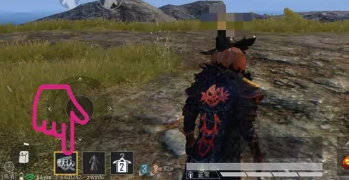bank cryptocurrency Block
Friends who have been paying attention to Junge know that Junge mentioned in his article last Friday that the key force driving the market to break through that day was the Shanghai and Shenzhen 300ETF, which was the exclusive market entry channel for the national team. It can be seen that the national team entered the stadium ahead of schedule on the eve of Politburo meeting of the Chinese Communist Party.Yesterday, both the A-share market and the Growth Enterprise Market index opened sharply higher and went lower, which was very ugly. After the A-share market closed, the decline of Hong Kong stocks expanded. Last night, the FTSE A50 and Nasdaq China Jinlong Index both showed obvious corrections, and the China Jinlong Index fell by more than 4%!Let's take a look at the trends of insurance, brokerage and real estate yesterday. These three directions were the main force that drove the market to break through last Friday. Yesterday, all three sectors opened higher and went lower. Today, brokers and real estate quickly stopped falling, keeping the market from falling further. So who's on the pressure plate, you don't have to tell me.
In addition, there is a group of people who were the main force of yesterday's pressure plate, that is, retail investors who suffered a big loss on October 8. This part of the investors have been convinced that yesterday's sharp opening will inevitably lead to a high opening and a low going, so they were selling at the opening yesterday. Some hesitant investors may have missed the high-selling opportunity opened yesterday, but they saw the unilateral decline of the market in intraday trading, which is replicating the trend of October 8. Worried that there will be a sharp drop in the next few days, I began to turn around and lighten my position.Going back to today's stop-fall market, I am afraid that the stability of the national team is only one aspect. The main institutions that stood by yesterday, most of today's buying will be released obviously. The retail investors who ran away yesterday, after seeing the market stabilize, are not expected to continue to lighten up their positions today.Let's take a look at the trends of insurance, brokerage and real estate yesterday. These three directions were the main force that drove the market to break through last Friday. Yesterday, all three sectors opened higher and went lower. Today, brokers and real estate quickly stopped falling, keeping the market from falling further. So who's on the pressure plate, you don't have to tell me.
What does this mean? To put it simply, when the market opened sharply higher yesterday, the main institutions were unwilling to chase after it, so the decrease in buying was very obvious. However, the selling of institutional seats was basically the same as that on Monday. This shows that the main institutions did not deliberately borrow good shipments yesterday. In terms of hot money, it was still a net inflow yesterday.Second, in the early stage of the meeting, in addition to the financial advantage, there is a more important political task, which is to maintain stability during the meeting and avoid large fluctuations in the market. The purpose of maintaining stability here is not only to prevent the short-term sharp decline of the market, but also to prevent the sharp rise. If it is a sharp drop, it will increase the buying power to pull up the index. If it is a sharp rise, it will throw out the chips for the pressure plate last Friday.In this regard, Jun Ge wants to remind everyone that there are many kinds of market funds, including the national team, main funds and ordinary retail investors. Among these three categories, they are also divided into several sub-categories. For example, the funds with the background of Chinese characters include Huijin, insurance, social security and pension. The main funds are more, which can be divided into public offering, private placement, hot money, trust, brokerage self-operated, foreign-funded institutions and so on; Even retail investors should be divided into large households and ordinary retail investors.
Strategy guide 12-14
Strategy guide
12-14
Strategy guide 12-14
Strategy guide 12-14
<sup id="mFZt4"></sup>






















